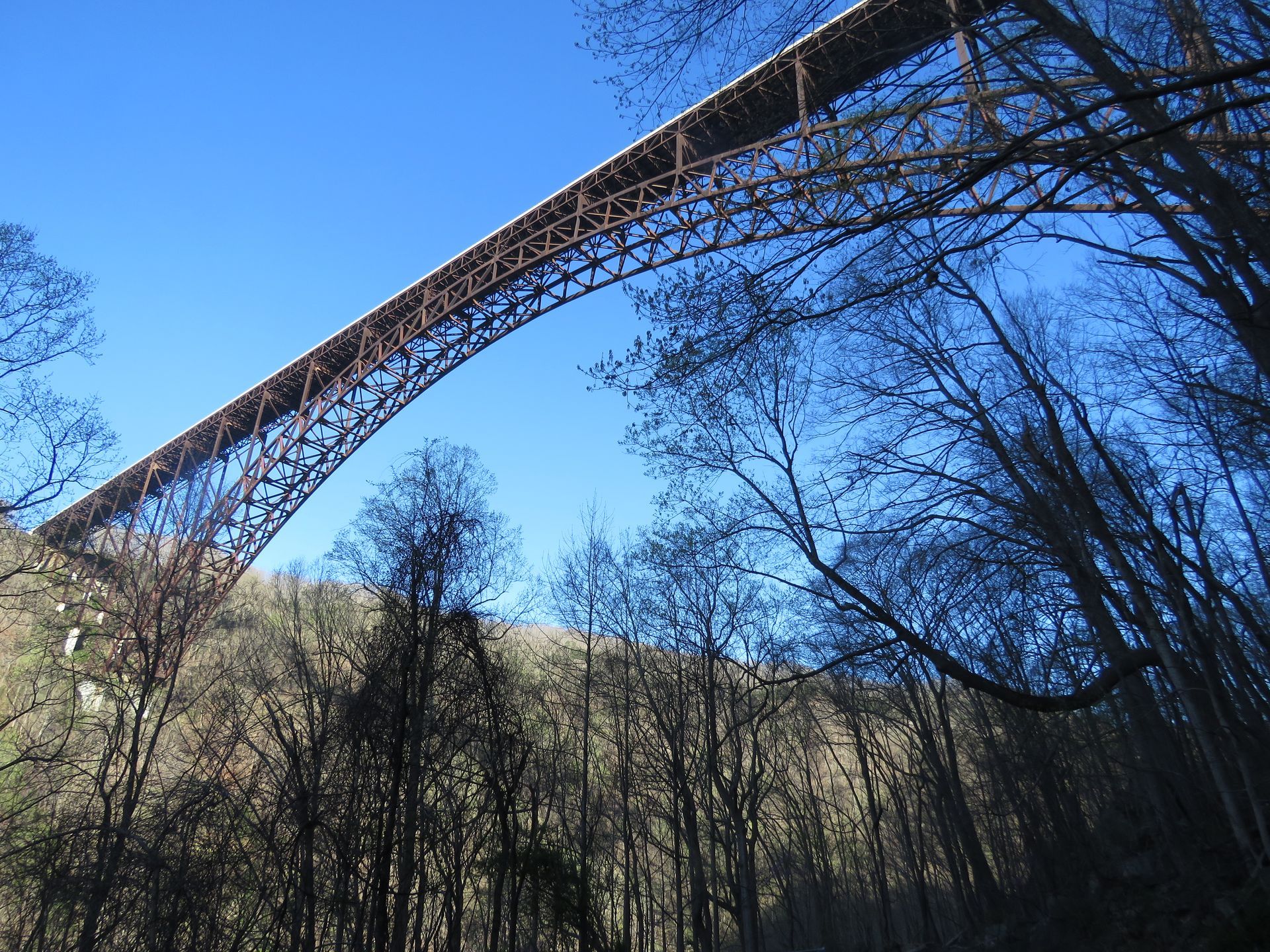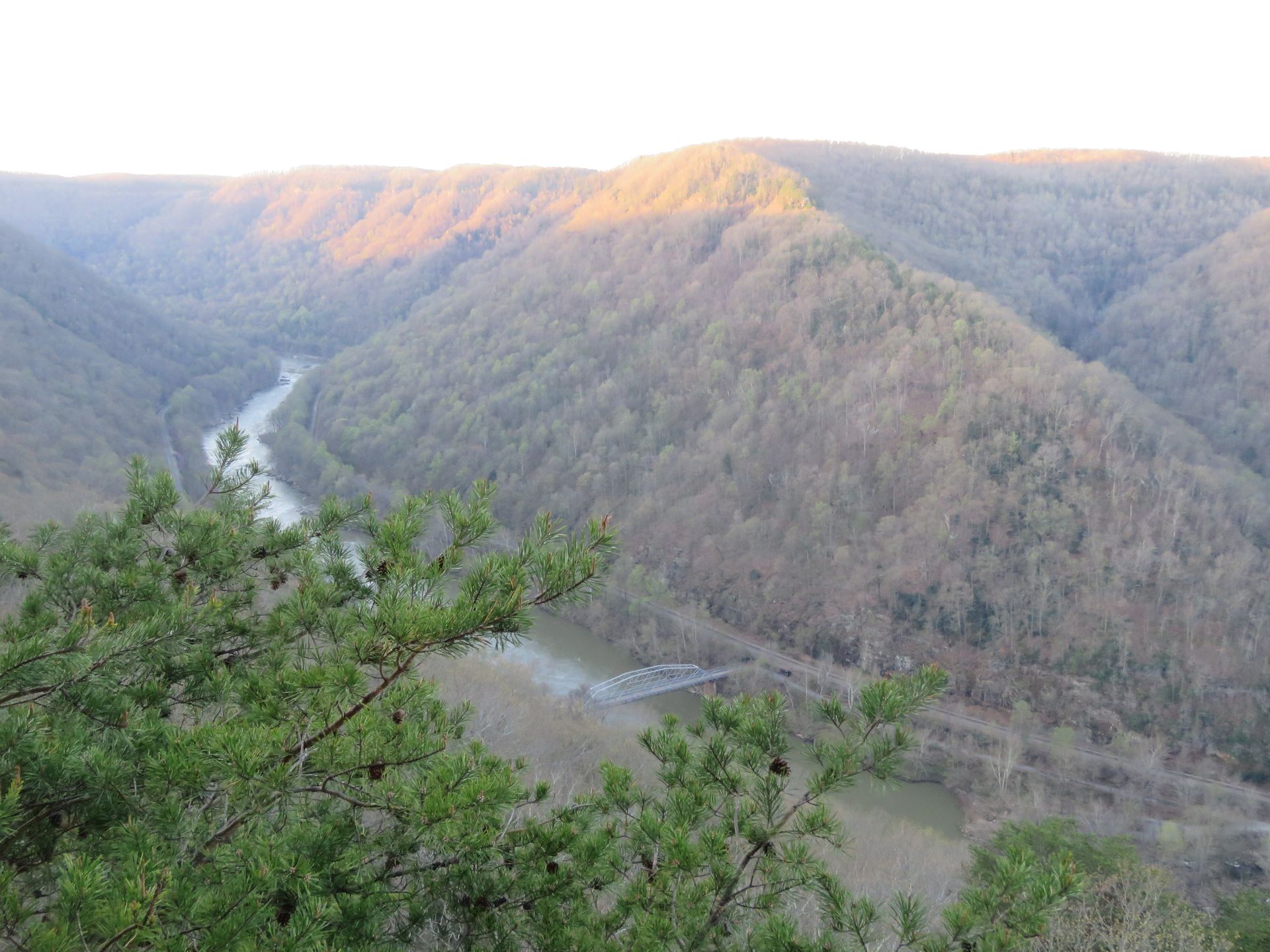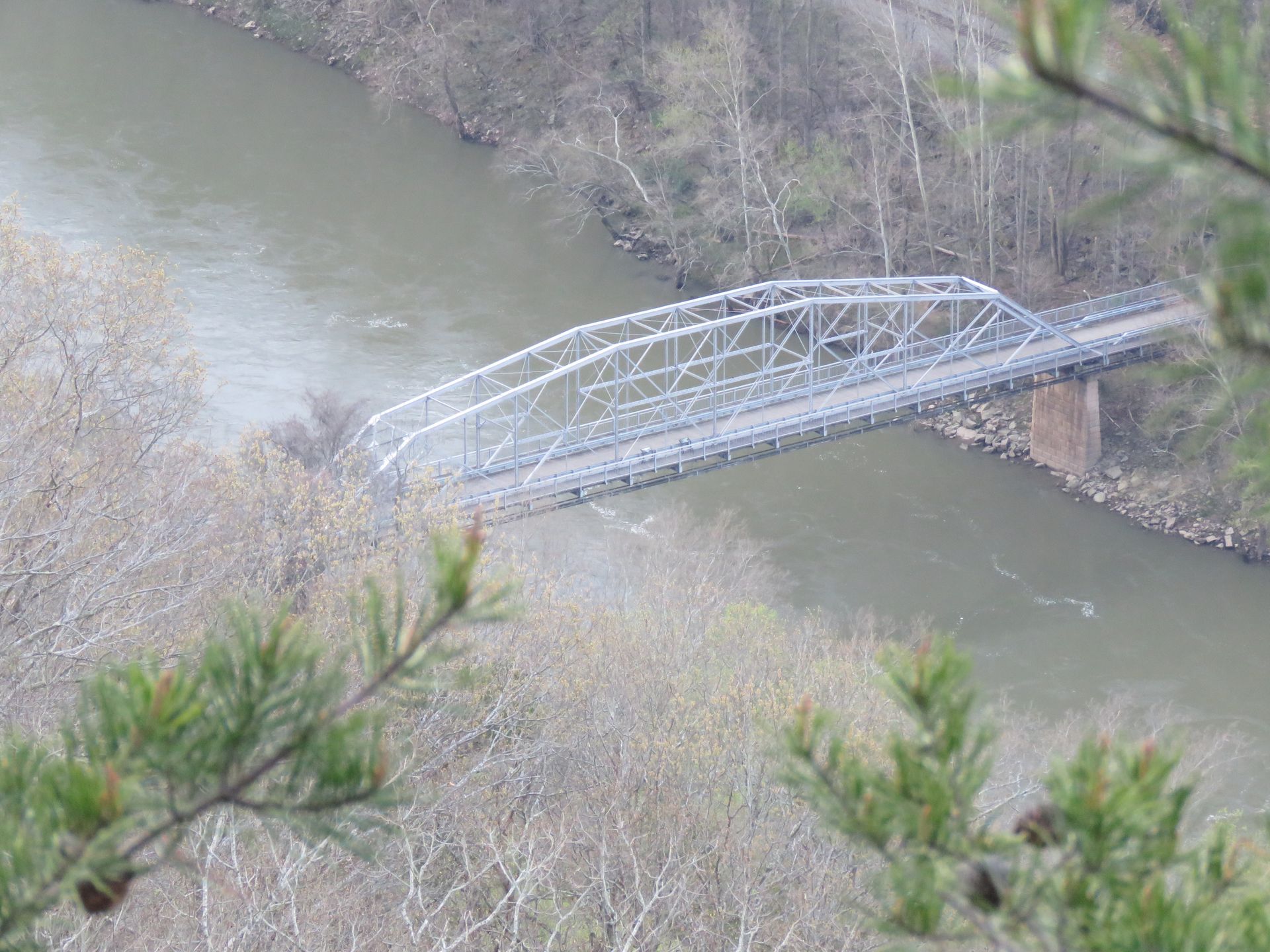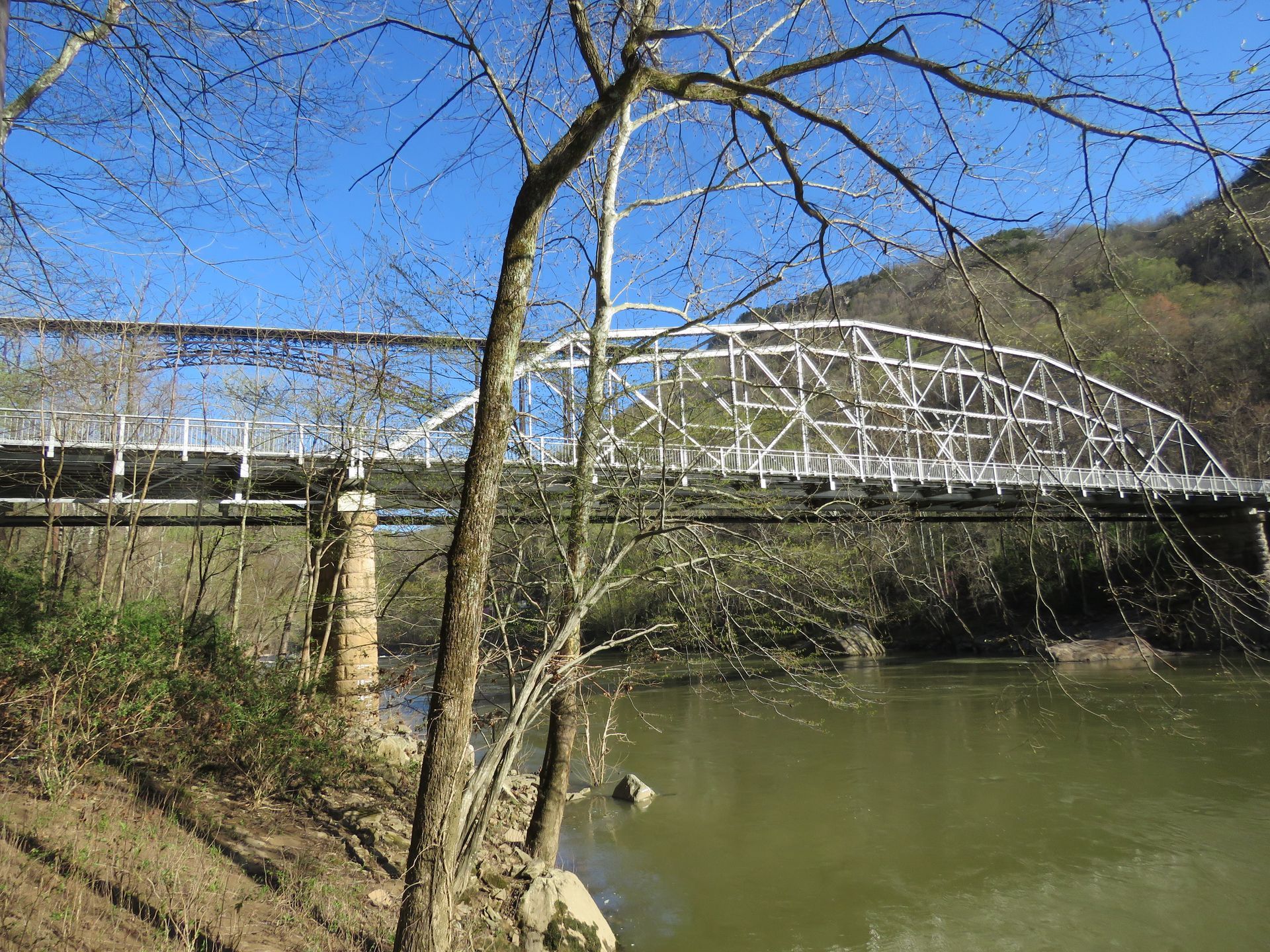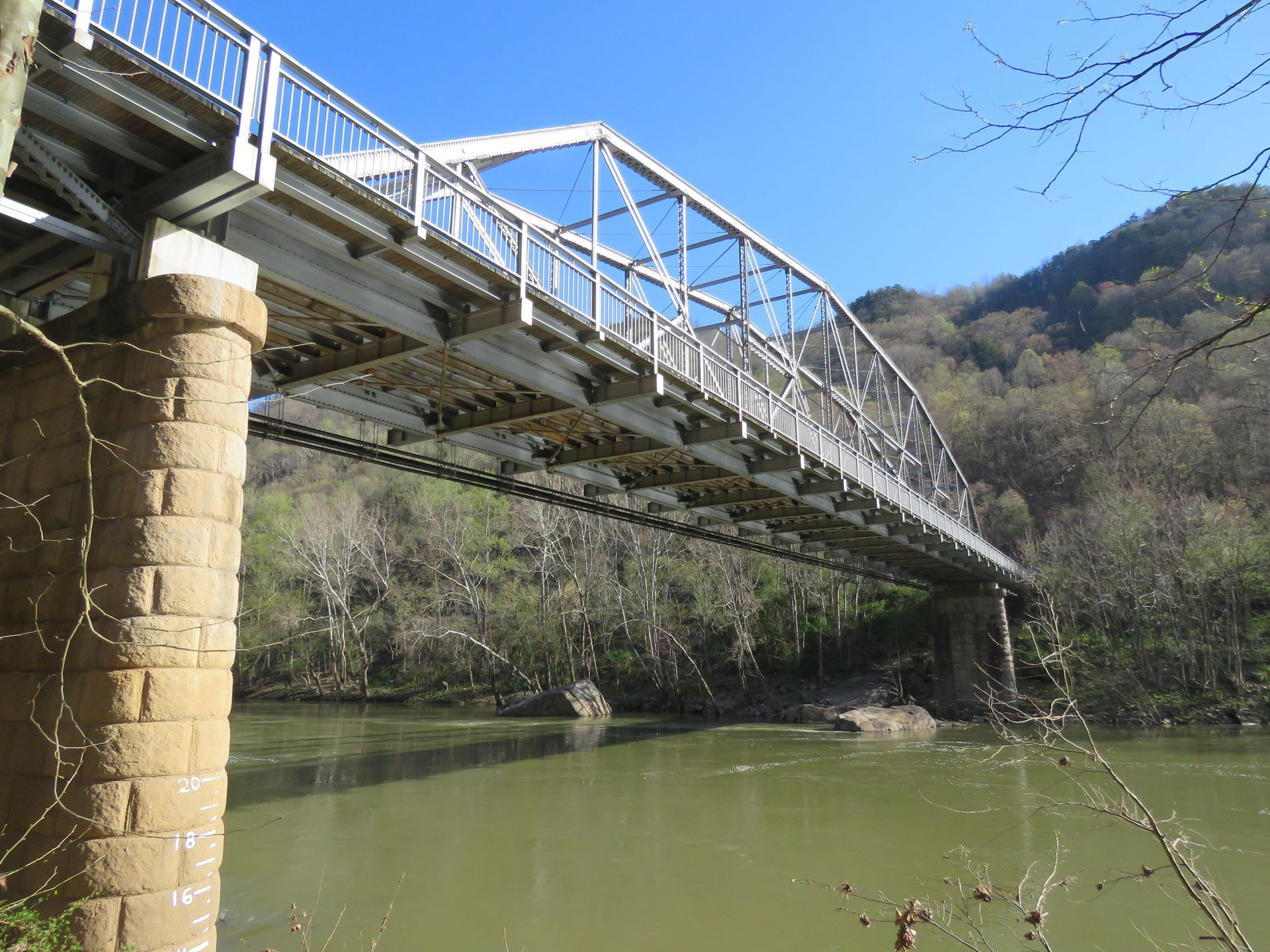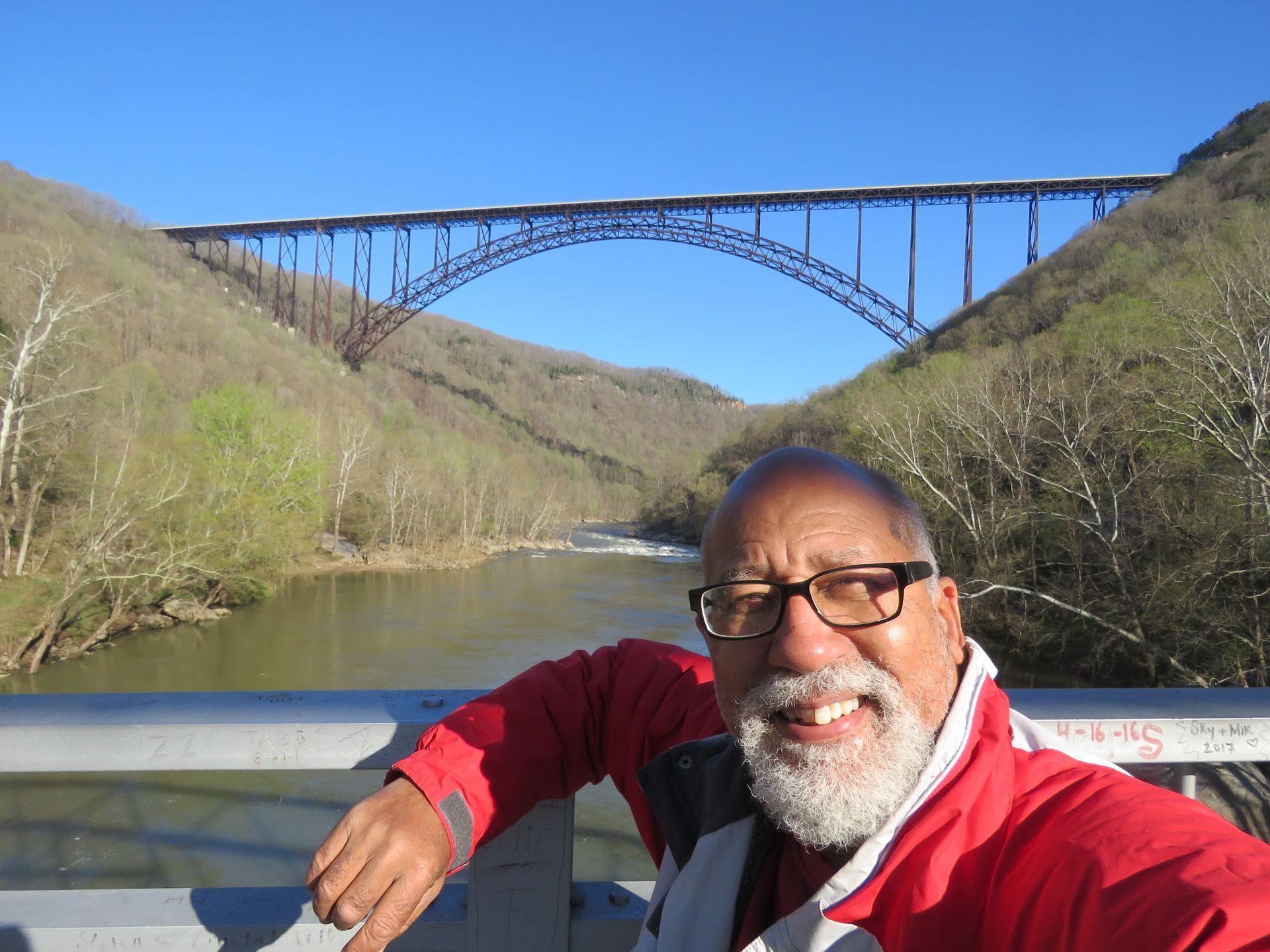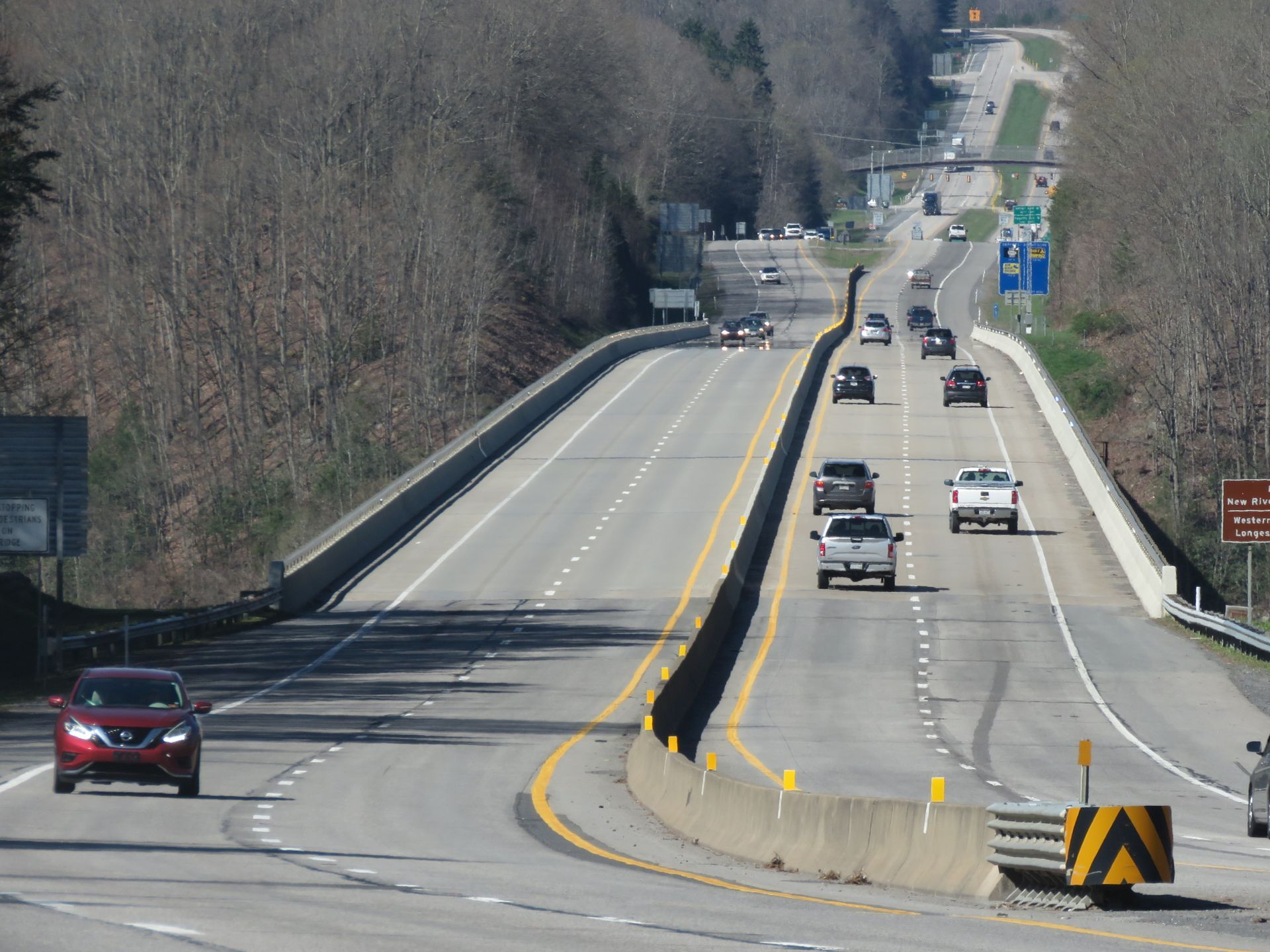BUILDING
BRIDGES
THE IRON AND CONCRETE WINGS OF AMERICA
New River Gorge Bridge, Fayetteville, WV
The Highest Vehicular Bridge in the Eastern United States
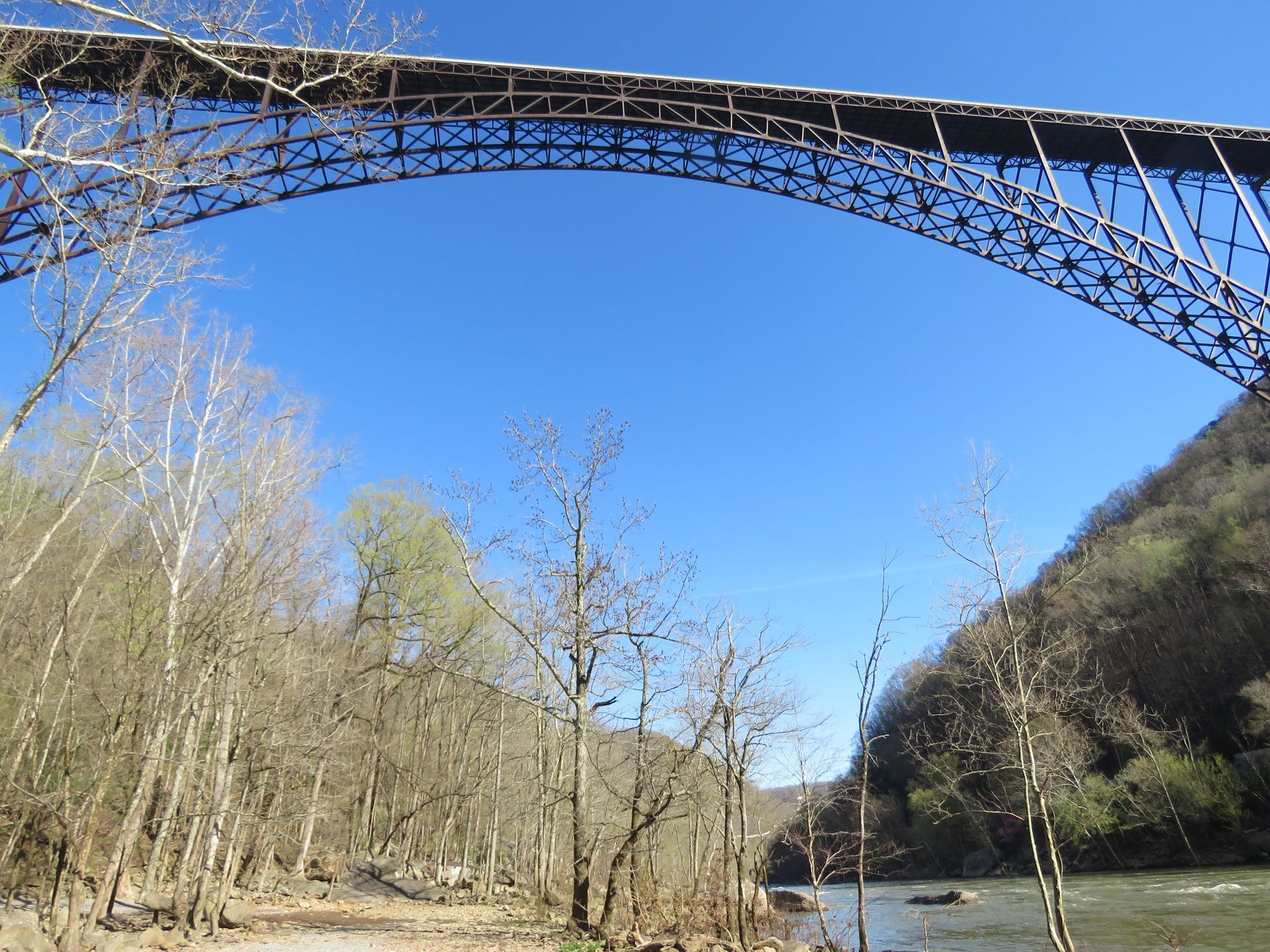
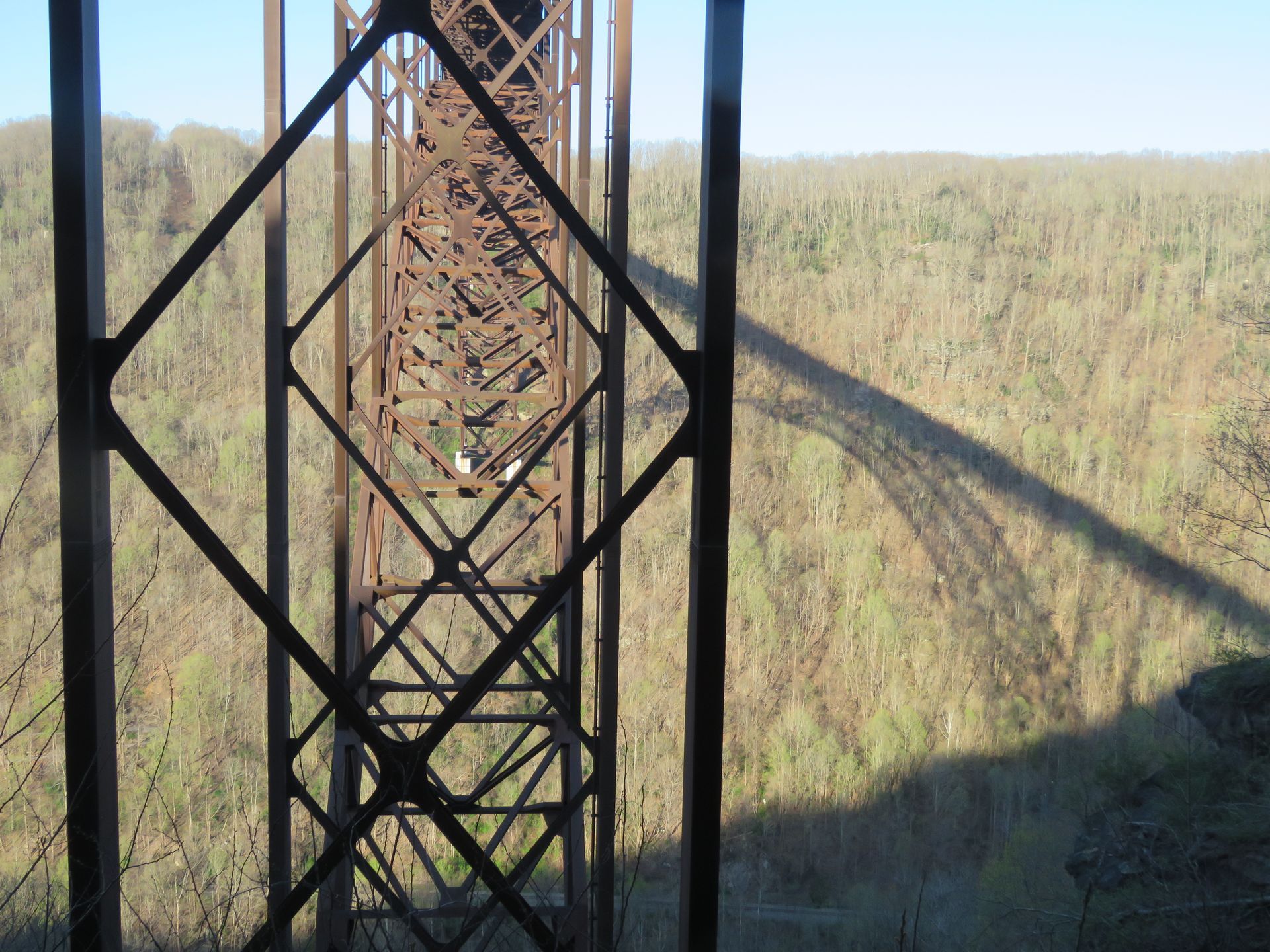
The New River Gorge Bridge is a 3,030 foot long continuous steel truss arch bridge built in three years (1974 to 1977) by the American Bridge division of U.S. Steel. The steel arch itself measures 1,700 feet long. Total cost was $37 million dollars ($124 million in today's dollars) and it weighs 88 million pounds.
According to the National Park Service, the arching structure is made of USS COR-TEN B steel to ensure its weld points age at the same time as the rest of the steel framework. The bridge is resting on two concrete piers built into the side of the canyon, and because of the winds that whip through the gorge, the bridge actually "moves" slightly to adjust to winds and traffic.
For 26 years, the New River Gorge Bridge held the title of "longest single-span steel arch bridge in the world;" as of 2021, it is now the 5th longest. At 876 feet above the riverbed, it is the highest vehicular bridge in the eastern United States, and the third highest in the country after Colorado's Royal Gorge Bridge and the O'Callaghan-Tillman Bridge at Hoover Dam.
The New River Gorge Bridge was built as part of Corridor "L" in the Appalachian Development Highway system of promoting economic development in isolated areas of Appalachia (by the way, Corridor "B" is U.S. 23 from Asheville north through Kingsport, SW Virginia and eastern Kentucky, ending at Lucasville, Ohio).
U.S. 19 once traveled down the canyon walls to cross the river on a still-existing bridge.. the trip down and back up took about 45 minutes. The new bridge cut the trip down to less than one minute.
The New River Gorge Bridge is on the National Register of Historic Places and the biggest fun fact about it is that every October, Bridge Day is hosted by the nearby community when, on one day out of the year, parachutists can jump off the bridge legally.
Another fun fact... because it's too corrosive, the West Virginia Department of Highways does not use salt on the bridge during icy conditions. Maintenance crews use calcium magnesium with a potassium acetate, which they feel is more environmentally friendly.
